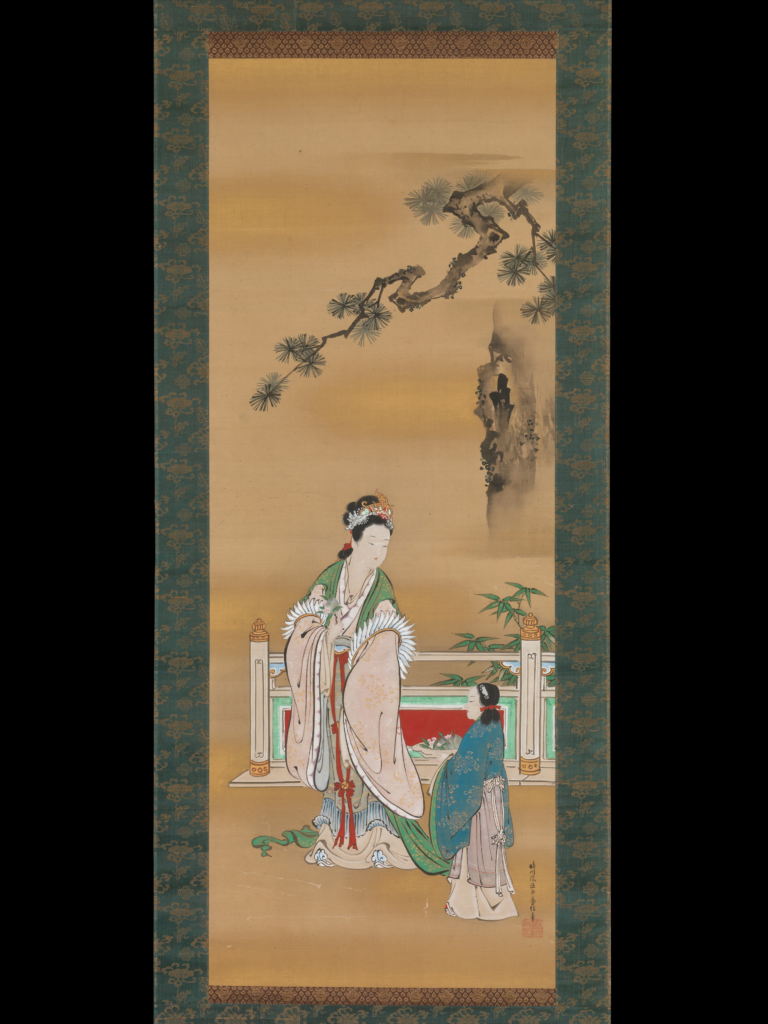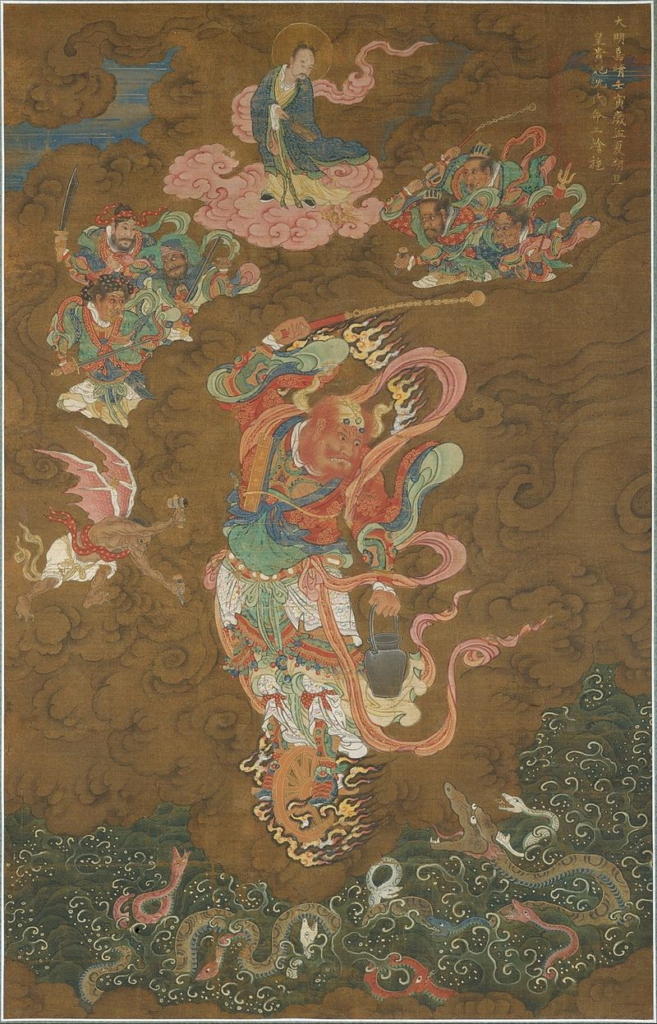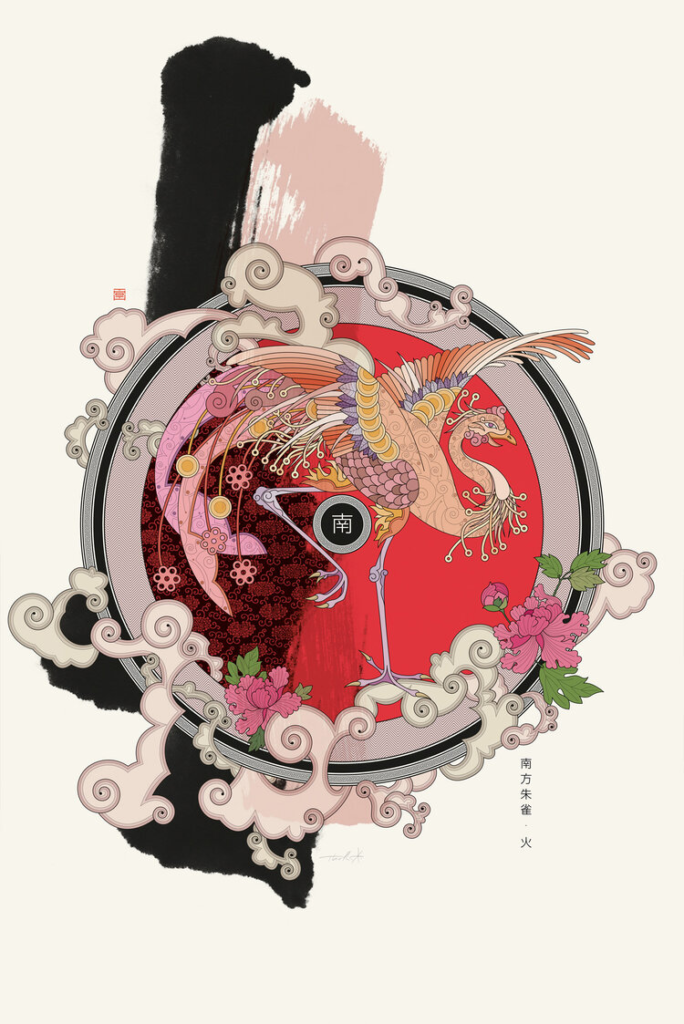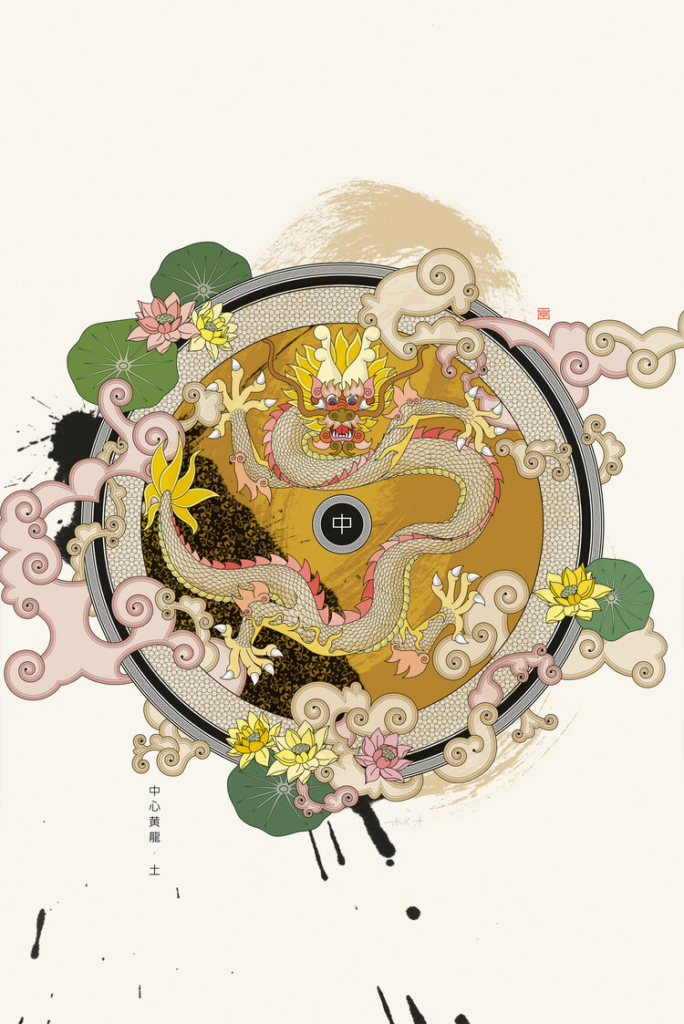Who are the main Taoist figures on the murals of Cave 249? The basics explained.
The Western Queen (Xiwangmu)

The Western Queen is also known as Xiwangmu and the Queen Mother of the West. She was the most prominent goddess in traditional Chinese mythology, with her worship being traced all the way back to oracle bones from the Shang dynasty.1
Xiwangmu is intimately linked to immortality. Her palace on Mount Kunlun is a mythical paradise for immortals.2 She is associated with the peaches of immortality and said to control the “secret of immortality.”3
In addition to granting immortality, the Western Queen can also bless people with riches and fertility and aid them in their struggles.4
Xiwangmu is associated with the yin – femininity, receptiveness, darkness, water. She is the ultimate creative and powerful yin – a guardian and role model for all Taoist women, especially those living nonconventional lives.5
The Eastern Lord (Dongwanggong)
The Eastern Lord is also known as Dongwanggong and the King Father of the East. He is the god of the other Taoist immortals and inscribes their names in his book.6 He is married to the Western Queen, Xiwangmu and lives with her at Mount Kunlun. Dongwanggong and Xiwangmu raised nine sons and twenty-four daughters.7
The Eastern Lord represents the yang – masculinity, initiative, light, fire, expansion. Together with Xiwangmu, the two major deities represent the delicate balance of universal forces at the core of Taoist beliefs.8

The Three Emperors
The Three Emperors are legendary demigod rulers from the mythological novel Shi Yi Ji by Wang Jia. The novel was written during the Jin Dynasty (266-420 CE).9 The emperors were the first rulers of Ancient China. Each emperor’s reign was said to last over 10,000 years.10 Their many heads (13, 11, and 9, respectively) refer not to physical heads, but to relatives who helped them maintain order over the lands. The emperors achieved lofty feats, such as correcting the movement of the sun and moon and organizing the earth into its tribes.11



Nature Gods
Many deities in Taoism and traditional Chinese mythology were personifications of natural phenomena. Some of the nature deities featured in Cave 249 are the thunder god (Lei Gong), the lightning god (Dianmu), the wind god (Feng Bo/Fei Lian), and the rain god (Yu Shih, Chi Songzi).12
The thunder god, Lei Gong, carries a drum, mallet, and chisel which he uses to create thunder.13 He strikes down evil spirits and humans who have not faced retribution for their crimes. He is often seen riding a chariot and often appears monstrous with claws and wings.14 Lei Gong is married to the lightning goddess (Dianmu/Leizi). She uses a mirror to illuminate the skies for Lei Gong so he does not mistakenly smite an innocent person.15
The god of wind goes by both Fei Lian and Feng Bo. He takes many forms, such as a dragon and a creature with a bird’s head and a snake’s tail. He is associated with the constellation Chi.16
There are multiple rain gods in the Taoist and traditional Chinese pantheons. One is Chi Songzi, who ended a historic drought during the reign of emperor Shen Nong.17 Another is Yu Shih, the Rain Master. Yu Shih can either be a human or a dragon. One drop of water from his vial of water is enough to cause downpours for a whole week.18


Cardinal Direction Guardians
Five mythical creatures represented the cardinal directions. These beasts connected with the five elements and have numerous auspicious symbols.19
The Blue Dragon of the East represents the element of wood. He is associated with spring and young yang energy.20 He is a rain-bringer deity.21
The White Tiger of the West represents the element of metal. It is associated with autumn and young yin energy.22
The Phoenix of the South represents the element of fire. It is associated with summer and old yang energy.23 The phoenix is also a symbol of warmth, peace, and prosperity. The bird is not only sacred to Taoists, but to Buddhists as well.24
The Black Tortoise of the North represents the element of water. It is associated with winter and old yin energy.25 The Black Tortoise is also referred to as the Dark Warrior, as it is a mythological creature combining the physical characteristics of a tortoise and a snake.26
In addition to the four guardians of the cardinal directions, a fifth guardian, the Yellow Dragon, represented the center. The Yellow Dragon represented the element of earth. It is associated with midsummer, and does not have a representative energy.27





- “Lamp Representing the Realm of the Queen Mother of the West (Xiwangmu).” Yale University Art Gallery. Accessed April 29, 2024. https://artgallery.yale.edu/collections/objects/61132. ↩︎
- “Queen Mother of the West,” Wikipedia, April 14, 2024, https://en.wikipedia.org/wiki/Queen_Mother_of_the_West. ↩︎
- “Lamp Representing the Realm of the Queen Mother of the West (Xiwangmu).” Yale University Art Gallery. Accessed April 29, 2024. https://artgallery.yale.edu/collections/objects/61132. ↩︎
- Ibid. ↩︎
- “Queen Mother of the West,” Wikipedia, April 14, 2024, https://en.wikipedia.org/wiki/QueeIbin_Mother_of_the_West. ↩︎
- Jeremy Roberts, Chinese Mythology, A to Z (New York: Chelsea House, 2010). ↩︎
- “King Father of the East,” Wikipedia, December 15, 2023, https://en.wikipedia.org/wiki/King_Father_of_the_East. ↩︎
- Ibid. ↩︎
- “Mogao Cave 249 (Western Wei Dynasty),” Dunhuang Caves on the Silk Road, accessed April 4, 2024, https://www.dunhuang.ds.lib.uw.edu/. ↩︎
- “Three Sovereigns and Five Emperors,” Wikipedia, April 15, 2024, https://en.wikipedia.org/wiki/Three_Sovereigns_and_Five_Emperors. ↩︎
- Ibid. ↩︎
- “Mogao Cave 249 (Western Wei Dynasty),” Dunhuang Caves on the Silk Road, accessed April 4, 2024, https://www.dunhuang.ds.lib.uw.edu/. ↩︎
- Jeremy Roberts, Chinese Mythology, A to Z (New York: Chelsea House, 2010). ↩︎
- Ibid. ↩︎
- Ibid. ↩︎
- Ibid. ↩︎
- Ibid. ↩︎
- Ibid. ↩︎
- Ibid. ↩︎
- “Four Symbols,” Wikipedia, April 13, 2024, https://en.wikipedia.org/wiki/Four_Symbols. ↩︎
- Jeremy Roberts, Chinese Mythology, A to Z (New York: Chelsea House, 2010). ↩︎
- “Four Symbols,” Wikipedia, April 13, 2024, https://en.wikipedia.org/wiki/Four_Symbols. ↩︎
- Ibid. ↩︎
- Jeremy Roberts, Chinese Mythology, A to Z (New York: Chelsea House, 2010). ↩︎
- “Four Symbols,” Wikipedia, April 13, 2024, https://en.wikipedia.org/wiki/Four_Symbols. ↩︎
- Jeremy Roberts, Chinese Mythology, A to Z (New York: Chelsea House, 2010). ↩︎
- “Four Symbols,” Wikipedia, April 13, 2024, https://en.wikipedia.org/wiki/Four_Symbols. ↩︎